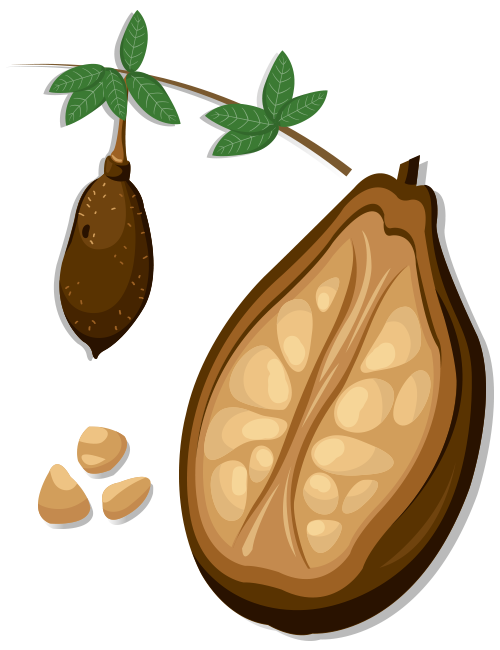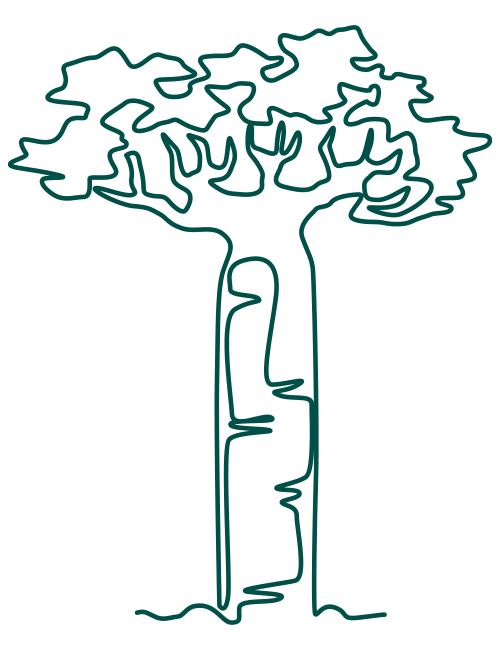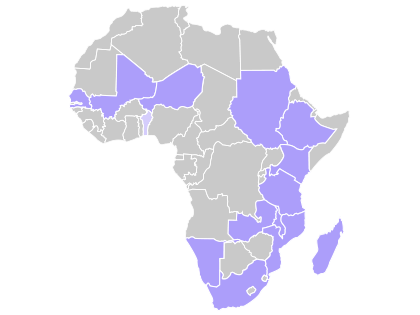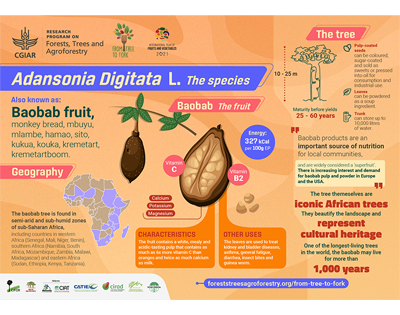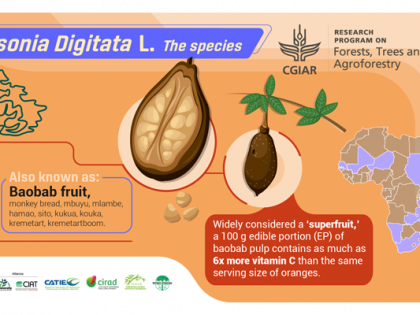Geography
Found in semi-arid and sub-humid zones of sub-Saharan Africa, including countries in western Africa (Senegal, Mali, Niger, Benin), southern Africa (Namibia, South Africa, Mozambique, Zambia, Malawi, Madagascar) and eastern Africa (Sudan, Ethiopia, Kenya, Tanzania).
Uses
Baobab fruit pulp can have up to 6x the vitamin C of oranges and is also rich in iron, calcium, potassium and magnesium. The fruit contains a white, mealy and acidic-tasting pulp that can be eaten fresh or processed into porridge, juice, jam and ice cream. The pulp-coated seeds can be colored, sugar-coated, and sold as sweets or pressed into oil for consumption and industrial use — particularly in cosmetic products.
Baobab fruit pulp is sold locally and internationally. Its products are an important source of nutrition for local communities, but there is also increasing interest and demand for baobab pulp and powder in Europe and the USA.
The leaves have high beta-carotene and iron content and are eaten fresh as leafy vegetables or dried and powdered as a soup ingredient. They are also used to treat kidney and bladder diseases, asthma, general fatigue, diarrhea, insect bites and guinea worm.
The tree itself is an iconic African tree, they beautify the landscape, represent cultural heritage and maintain African traditions, beliefs and knowledge. It is known as Africa’s upside-down tree due to its gnarled boughs which are leafless for many months of the year and appears like a root system growing into the sky. One of the longest-living trees in the world, the baobab may live for more than 1000 years.
In some places, the baobab has adapted to very dry and arid conditions, earning it recognition as a symbol of life in many cultures. The tree behaves like a giant succulent, storing up to 10,000 liters of water in its enormous trunk.
It has been identified in many African countries as a priority species for further domestication and enhanced utilization.


